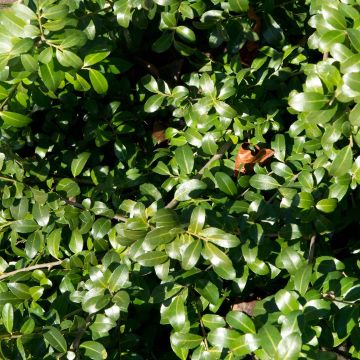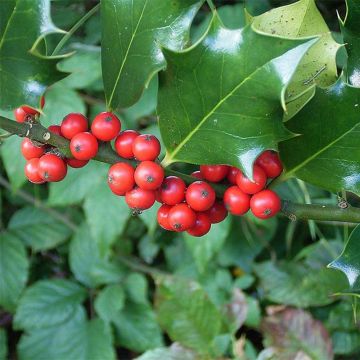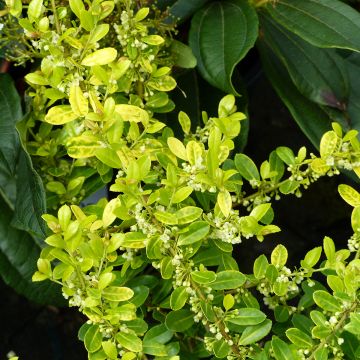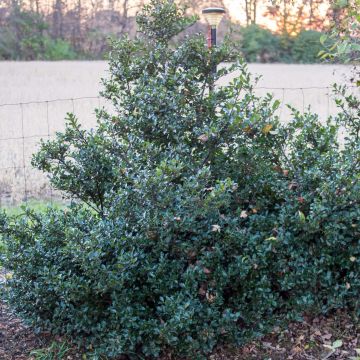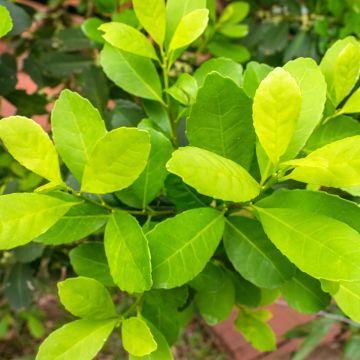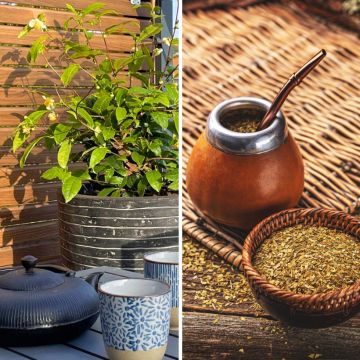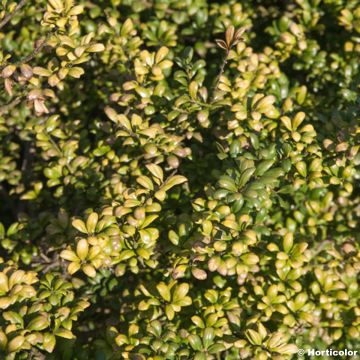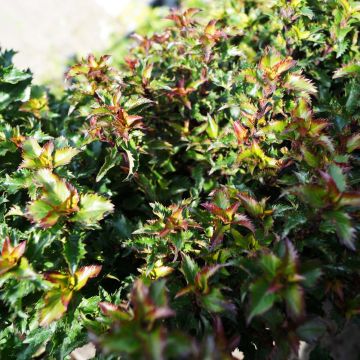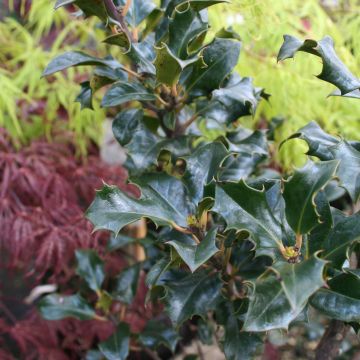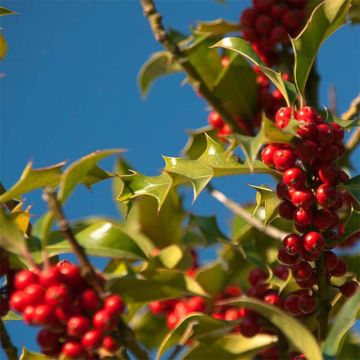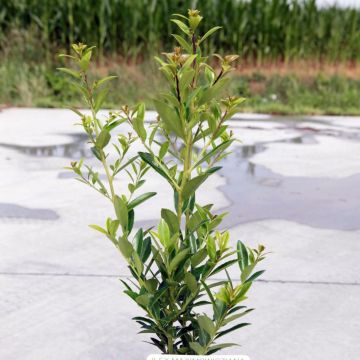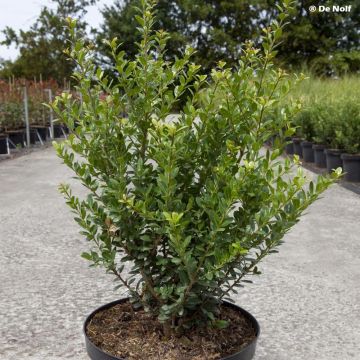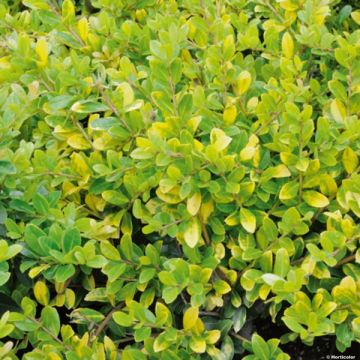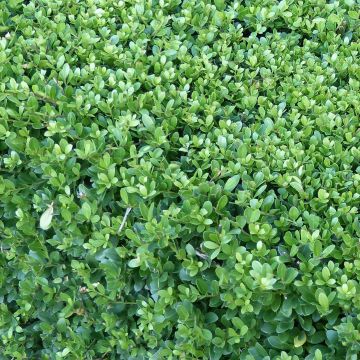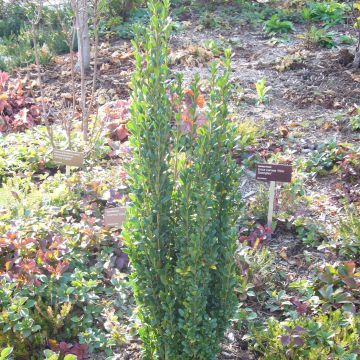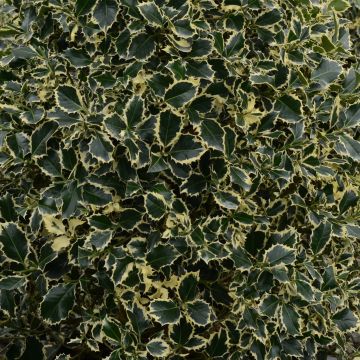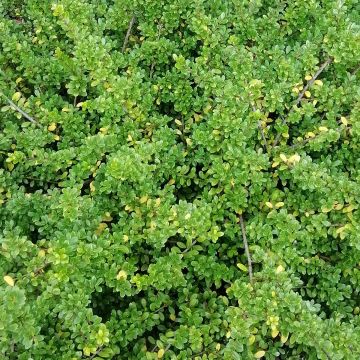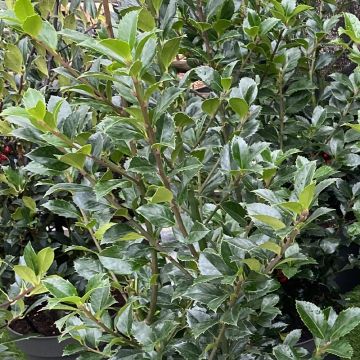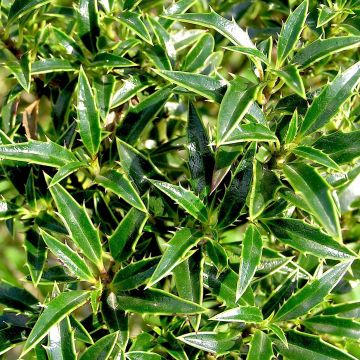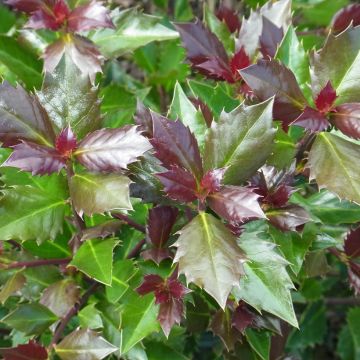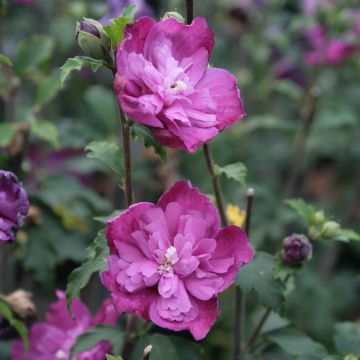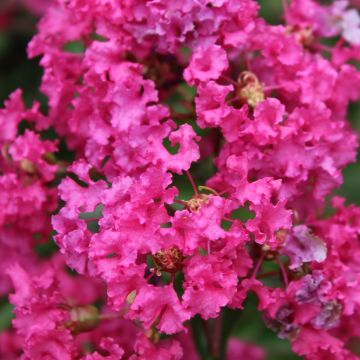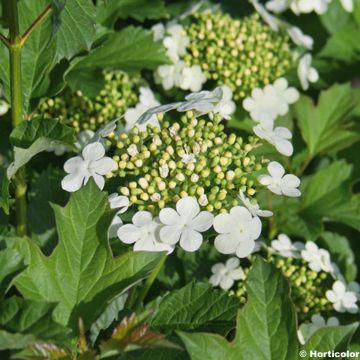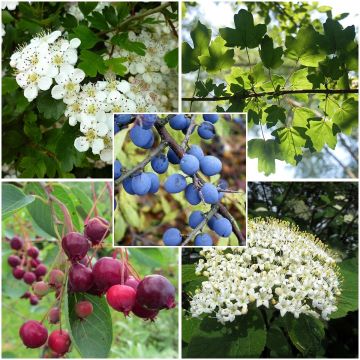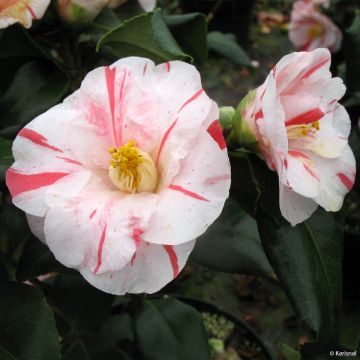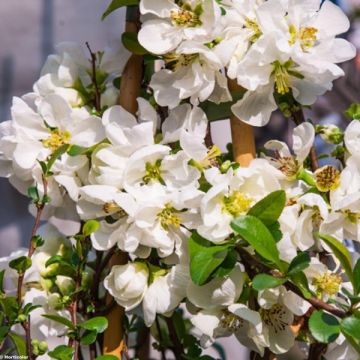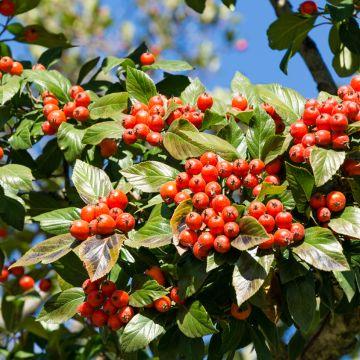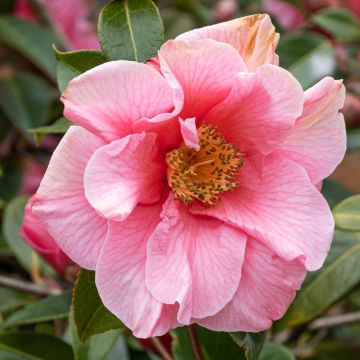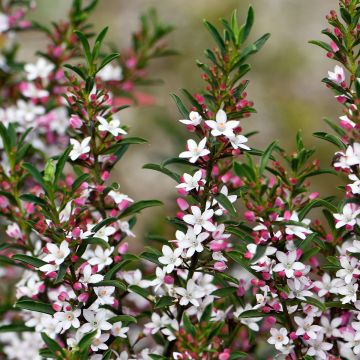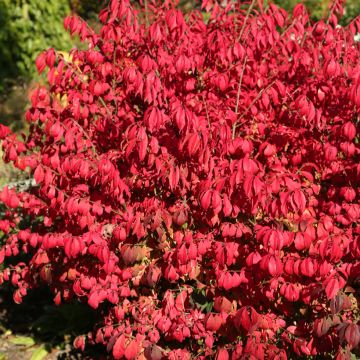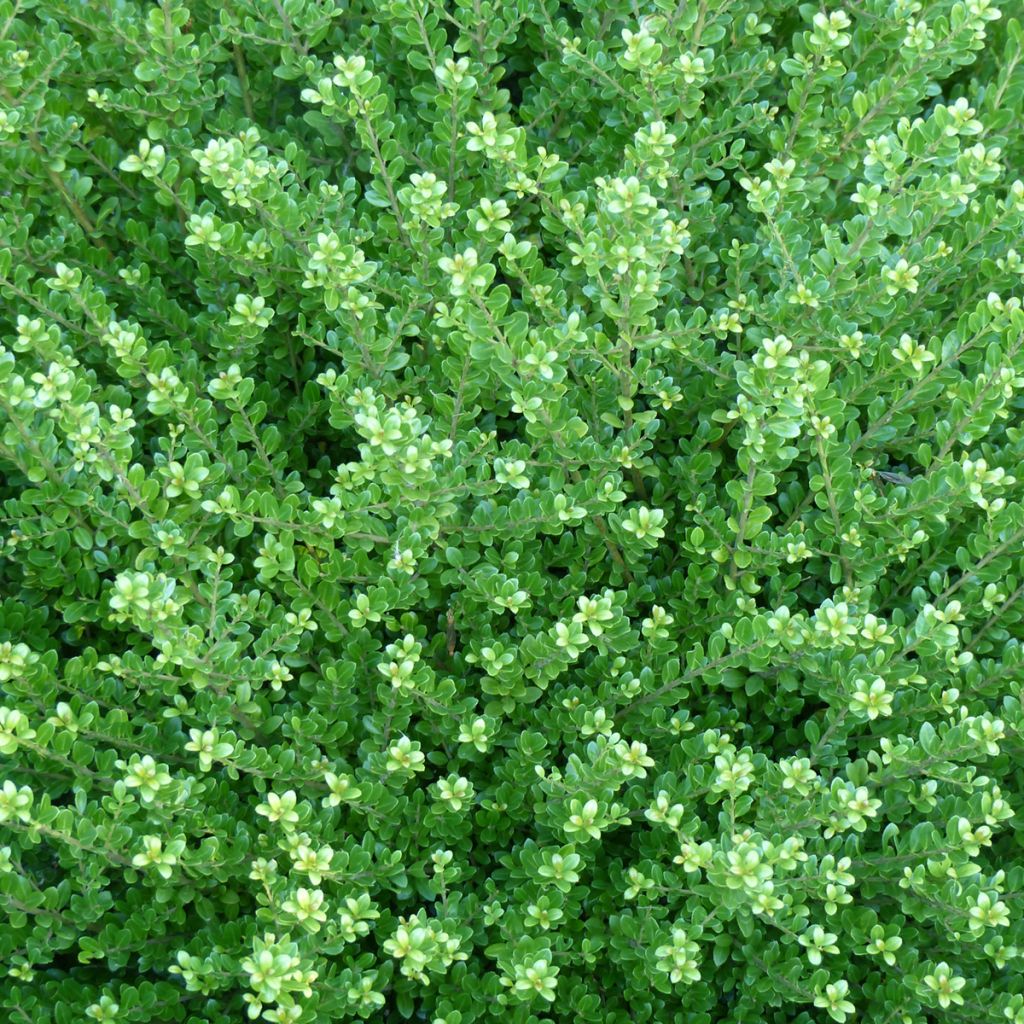

Ilex crenata Glorie Dwarf - Japanese Holly
Ilex crenata Glorie Dwarf - Japanese Holly
Ilex crenata Glorie Dwarf
Japanese Holly, Box-leaved Holly, Box-leaved Ilex, Dwarf Holly
Why not try an alternative variety in stock?
View all →This plant carries a 24 months recovery warranty
More information
We guarantee the quality of our plants for a full growing cycle, and will replace at our expense any plant that fails to recover under normal climatic and planting conditions.
From €5.90 for pickup delivery and €6.90 for home delivery
Express home delivery from €8.90.
From €5.90 for pickup delivery and €6.90 for home delivery
Express home delivery from €8.90.
Delivery to Corse prohibited: UE law prohibits the import of this plant from mainland France to Corse as part of the fight against Xylella fastidiosa. Please accept our sincere apologies.
More information
Does this plant fit my garden?
Set up your Plantfit profile →
Description
Ilex crenata 'Glorie Dwarf' is a variety of campanulate holly with slow growth and a very compact habit. As wide as it is tall, it has small, shiny, non-prickly, evergreen dark green leaves. Its small size, very dense foliage, and excellent pruning ability make it ideal for topiary. It thrives in partial shade to full sun and requires a slightly moist, well-drained, neutral to slightly acidic soil. It is a good alternative to boxwood in favourable conditions.
Ilex crenata, the species type, is native to temperate regions of Asia (China, Japan, Russia). It was introduced to Europe in the 19th century and to France in 1895. It has rigid branches, small shiny green leaves with a convex shape resembling boxwood leaves and measuring 1 cm to 3 cm (0.4 in to 1.2 in) in length. In May-June, inconspicuous greenish-white flowers appear. It is a dioecious plant, meaning that an individual is either female or male. In autumn, female plants bear small, black, shiny berries measuring 2 mm to 6 mm (0.08 in to 0.2 in) that last throughout winter. In its native habitat, this shrub can reach over 5 m (16.4 ft) in height. Numerous selected varieties have much smaller growth, and 'Glorie Dwarf' only reaches about 70 cm (27.6 in) in all directions. Its main quality lies in its very dense branching and shiny dark green leaves, which are slightly dentate (crenate) and do not exceed 2 cm to 3 cm (0.8 in to 1.2 in) in length. This is a female clone.
'Glorie Dwarf' can be shaped into a ball, low hedge, or other forms. It can be planted alongside other plants with miniature foliage, such as Acaena inermis 'Purpurea', a charming perennial ground cover with intricately cut foliage ranging from purple to red, occasionally with a touch of green. The small 'Dickson's Gold' campanula with yellow-green foliage and star-shaped blue flowers will also be a good companion for our miniature holly. Due to its slow growth, reduced mature size, and excellent tolerance to pruning, Ilex crenata 'Glorie Dwarf' is also well-suited for container or decorative pot cultivation.
Ilex crenata 'Glorie Dwarf' is a perfect alternative to boxwood, as it is not susceptible to Cylindrocladium buxicola, a parasite of boxwood. It is also resistant to the Box Tree Moth, which rapidly defoliates the poor shrubs it invades.
Report an error about the product description
Ilex crenata Glorie Dwarf - Japanese Holly in pictures
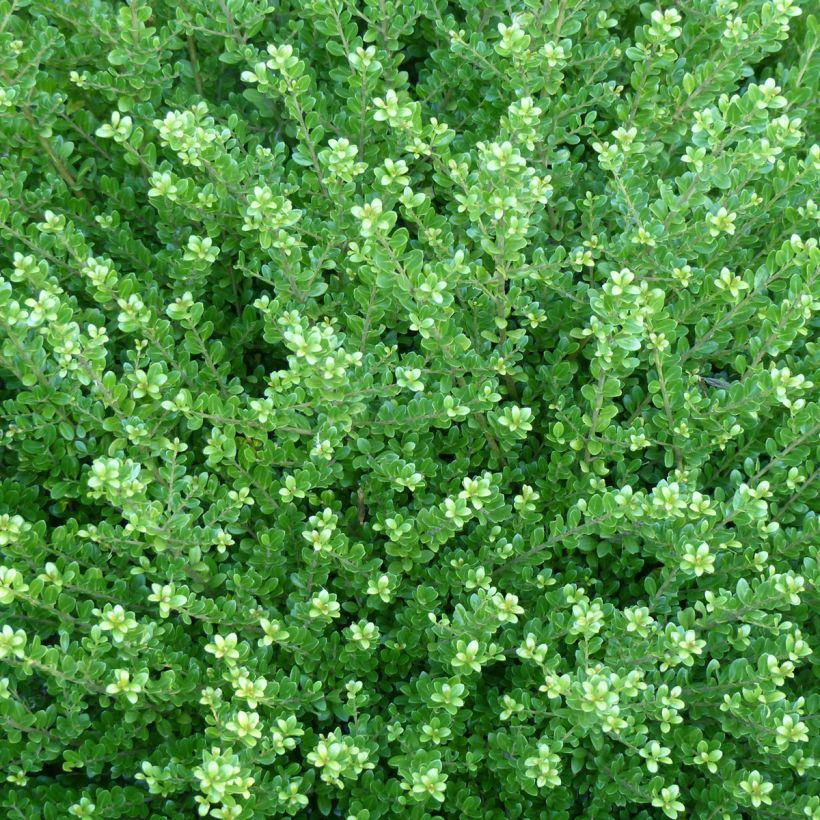

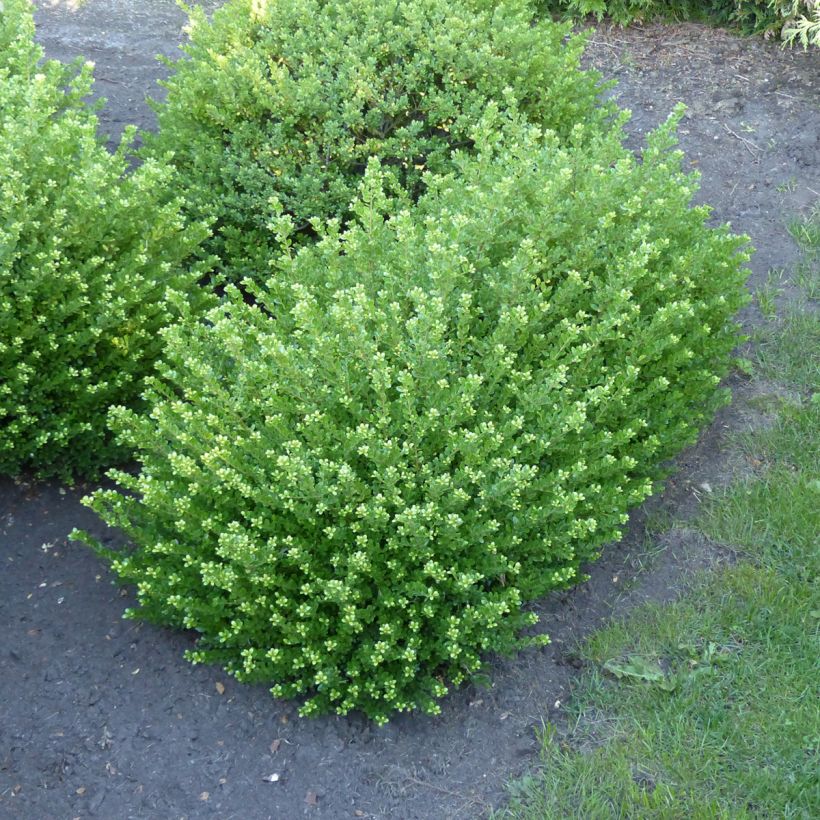

Plant habit
Flowering
Foliage
Botanical data
Ilex
crenata
Glorie Dwarf
Aquifoliaceae
Japanese Holly, Box-leaved Holly, Box-leaved Ilex, Dwarf Holly
Cultivar or hybrid
Other Ilex - Holly
Planting and care
To plant Ilex crenata 'Glorie Dwarf', add potting soil with compost and incorporate it into the topsoil of your garden (half and half if your soil is a bit poor in organic matter). In heavy soil, incorporate non-limestone coarse gravel at the bottom of the hole to create a drainage layer; its roots should not become waterlogged in winter. Plant in autumn or spring, outside of freezing periods, in its final location, as this species dislikes being transplanted.
Soak the root ball of the holly in a bucket to fully saturate it before planting, then water after filling the planting hole. Make sure to keep the soil moist in summer by watering when necessary. Starting from the second year, lightly fertilise in spring, preferably with organic fertiliser.
Ilex crenata 'Glorie Dwarf' is susceptible to white scale insects in spring and aphids; periodically inspect the foliage to be able to take action in time (treat with black soap to wash the foliage).
For planting in pots or containers, choose a slightly acidic substrate (pH around 6.5) by adding some non-limestone sand (about 20%) to improve drainage. Regularly water throughout the season. Fertilise with slow-release fertilisers at the beginning of the season, choosing formulas that are not too rich in nitrogen.
Planting period
Intended location
Care
This item has not been reviewed yet - be the first to leave a review about it.
Hedge shrubs
Haven't found what you were looking for?
Hardiness is the lowest winter temperature a plant can endure without suffering serious damage or even dying. However, hardiness is affected by location (a sheltered area, such as a patio), protection (winter cover) and soil type (hardiness is improved by well-drained soil).

Photo Sharing Terms & Conditions
In order to encourage gardeners to interact and share their experiences, Promesse de fleurs offers various media enabling content to be uploaded onto its Site - in particular via the ‘Photo sharing’ module.
The User agrees to refrain from:
- Posting any content that is illegal, prejudicial, insulting, racist, inciteful to hatred, revisionist, contrary to public decency, that infringes on privacy or on the privacy rights of third parties, in particular the publicity rights of persons and goods, intellectual property rights, or the right to privacy.
- Submitting content on behalf of a third party;
- Impersonate the identity of a third party and/or publish any personal information about a third party;
In general, the User undertakes to refrain from any unethical behaviour.
All Content (in particular text, comments, files, images, photos, videos, creative works, etc.), which may be subject to property or intellectual property rights, image or other private rights, shall remain the property of the User, subject to the limited rights granted by the terms of the licence granted by Promesse de fleurs as stated below. Users are at liberty to publish or not to publish such Content on the Site, notably via the ‘Photo Sharing’ facility, and accept that this Content shall be made public and freely accessible, notably on the Internet.
Users further acknowledge, undertake to have ,and guarantee that they hold all necessary rights and permissions to publish such material on the Site, in particular with regard to the legislation in force pertaining to any privacy, property, intellectual property, image, or contractual rights, or rights of any other nature. By publishing such Content on the Site, Users acknowledge accepting full liability as publishers of the Content within the meaning of the law, and grant Promesse de fleurs, free of charge, an inclusive, worldwide licence for the said Content for the entire duration of its publication, including all reproduction, representation, up/downloading, displaying, performing, transmission, and storage rights.
Users also grant permission for their name to be linked to the Content and accept that this link may not always be made available.
By engaging in posting material, Users consent to their Content becoming automatically accessible on the Internet, in particular on other sites and/or blogs and/or web pages of the Promesse de fleurs site, including in particular social pages and the Promesse de fleurs catalogue.
Users may secure the removal of entrusted content free of charge by issuing a simple request via our contact form.
The flowering period indicated on our website applies to countries and regions located in USDA zone 8 (France, the United Kingdom, Ireland, the Netherlands, etc.)
It will vary according to where you live:
- In zones 9 to 10 (Italy, Spain, Greece, etc.), flowering will occur about 2 to 4 weeks earlier.
- In zones 6 to 7 (Germany, Poland, Slovenia, and lower mountainous regions), flowering will be delayed by 2 to 3 weeks.
- In zone 5 (Central Europe, Scandinavia), blooming will be delayed by 3 to 5 weeks.
In temperate climates, pruning of spring-flowering shrubs (forsythia, spireas, etc.) should be done just after flowering.
Pruning of summer-flowering shrubs (Indian Lilac, Perovskia, etc.) can be done in winter or spring.
In cold regions as well as with frost-sensitive plants, avoid pruning too early when severe frosts may still occur.
The planting period indicated on our website applies to countries and regions located in USDA zone 8 (France, United Kingdom, Ireland, Netherlands).
It will vary according to where you live:
- In Mediterranean zones (Marseille, Madrid, Milan, etc.), autumn and winter are the best planting periods.
- In continental zones (Strasbourg, Munich, Vienna, etc.), delay planting by 2 to 3 weeks in spring and bring it forward by 2 to 4 weeks in autumn.
- In mountainous regions (the Alps, Pyrenees, Carpathians, etc.), it is best to plant in late spring (May-June) or late summer (August-September).
The harvesting period indicated on our website applies to countries and regions in USDA zone 8 (France, England, Ireland, the Netherlands).
In colder areas (Scandinavia, Poland, Austria...) fruit and vegetable harvests are likely to be delayed by 3-4 weeks.
In warmer areas (Italy, Spain, Greece, etc.), harvesting will probably take place earlier, depending on weather conditions.
The sowing periods indicated on our website apply to countries and regions within USDA Zone 8 (France, UK, Ireland, Netherlands).
In colder areas (Scandinavia, Poland, Austria...), delay any outdoor sowing by 3-4 weeks, or sow under glass.
In warmer climes (Italy, Spain, Greece, etc.), bring outdoor sowing forward by a few weeks.

































